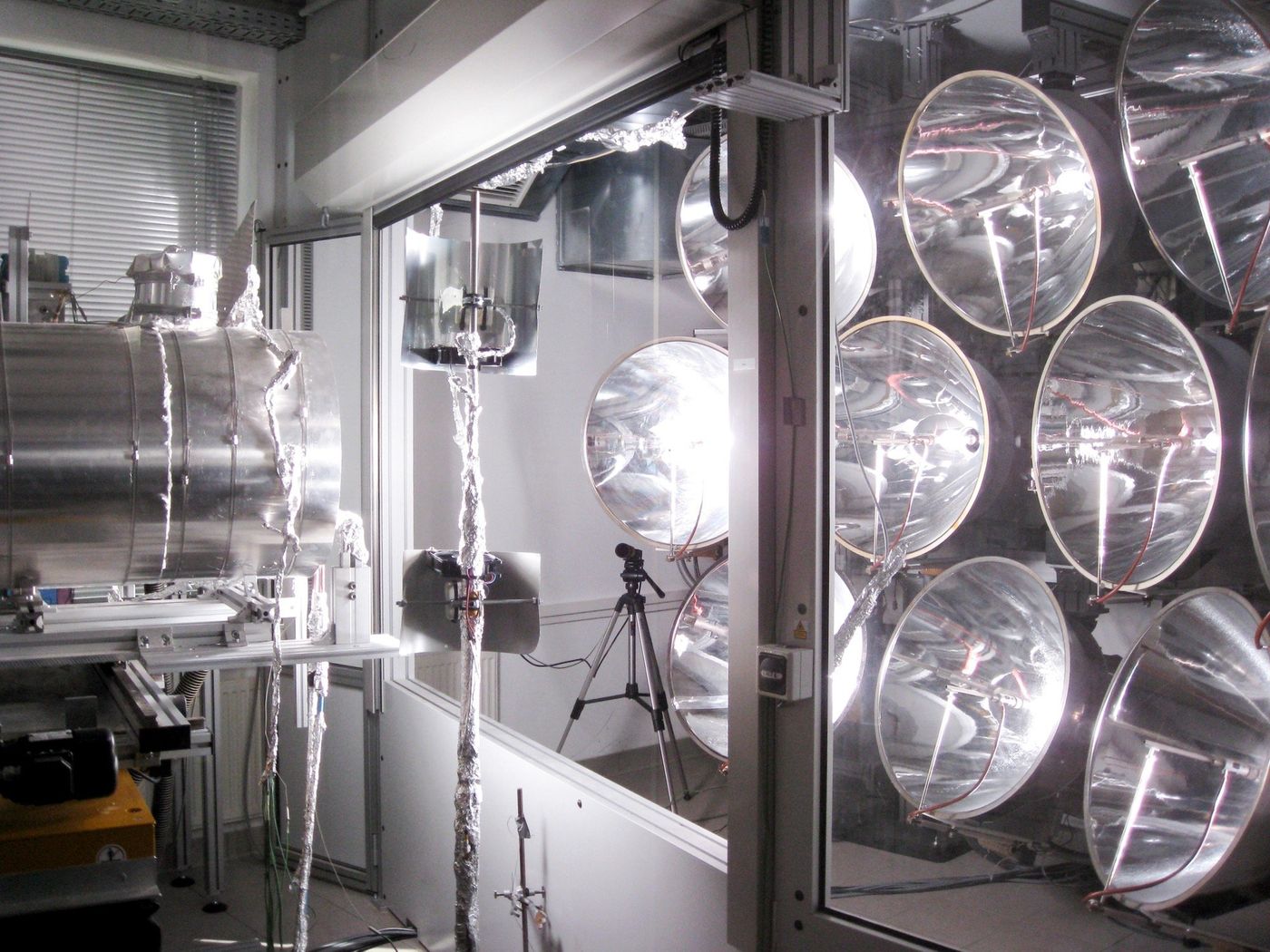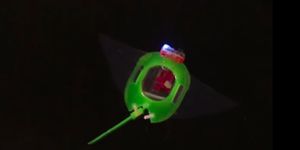Meet the World's Most Powerful Artificial Sun
Germany has built what they are calling “the world’s largest artificial Sun,” which takes 149 powerful xenon short-arc lamps and puts them together into an array to create a powerful light beam. It’s being called Synlight.
The lamps are all heavily-focused in one direction with cone-shaped reflectors similar to those found inside of flashlights. More importantly, Synlight is being kept inside of a radiation chamber simply because the lights are capable of producing so much heat that anyone anywhere near the light rays would burn to death.
Image Credit: DLR
Altogether, the lamps reportedly produce temperatures of up to 3,000-3,500 degrees Celsius, which equates to almost 10,000 times the amount of solar radiation that normally pounds on a surface outside from day-to-day Sun exposure. Notably, no combustion-based chemical reactions on Earth can reach these temperatures.
So what’s the purpose of creating this artificial Sun? Scientists are hoping to use this device (and smaller ones like it) in a lab-based setting to split water atoms, which can produce hydrogen as fuel in future applications. This would be beneficial, as hydrogen doesn’t exist naturally and can be burned without emissions that add to global warming problems.
Related: Toyota announces a truck that runs off of hydrogen
Synlight can also be used to test solar panels, as well as photosynthesis, among other things that require sunlight to function in lab-based conditions.
Since Germany doesn’t have as reliable of sunlight conditions as other parts of the world do, Synlight allows German scientists to use artificial sunlight as a means of testing during times when Sunlight is low or too unreliable to conduct experiments naturally.
Related: What you need to know about the Sun's recent lack of Sunspot activity
Obviously, Synlight doesn’t replace sunlight as a power source for solar panels, because it requires a lot of electricity to power the lamps in the first place. As a result, you won’t find anyone claiming that Synlight is a replacement for sunlight in terms of powering solar panels.
Seeing how Synlight can be used in the future should not only be interesting, but it should also be beneficial to future science endeavors and enable the exploration of new technologies and/or further our knoeldge of chemical processes.
Source: The Guardian









